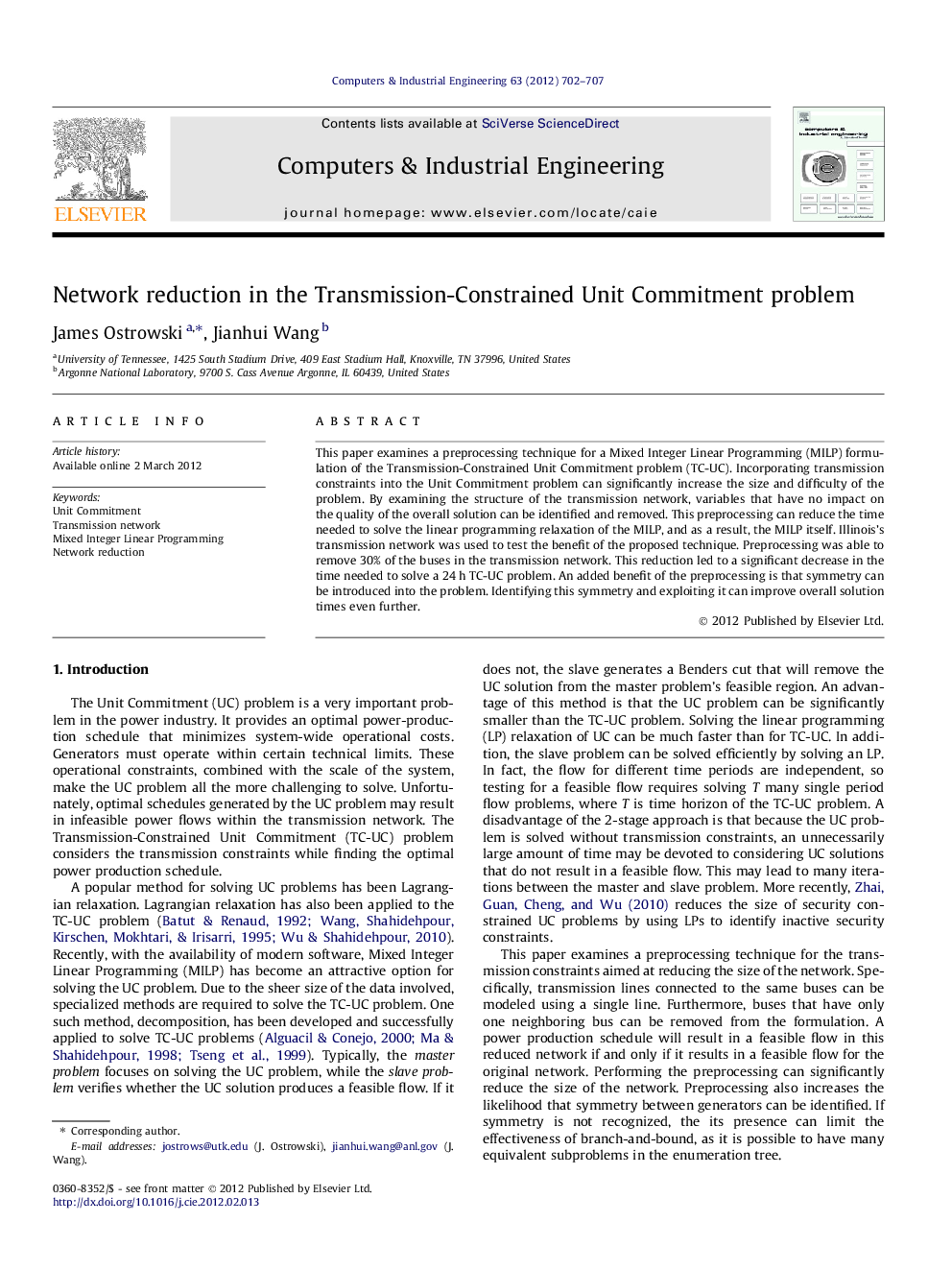| Article ID | Journal | Published Year | Pages | File Type |
|---|---|---|---|---|
| 1134812 | Computers & Industrial Engineering | 2012 | 6 Pages |
This paper examines a preprocessing technique for a Mixed Integer Linear Programming (MILP) formulation of the Transmission-Constrained Unit Commitment problem (TC-UC). Incorporating transmission constraints into the Unit Commitment problem can significantly increase the size and difficulty of the problem. By examining the structure of the transmission network, variables that have no impact on the quality of the overall solution can be identified and removed. This preprocessing can reduce the time needed to solve the linear programming relaxation of the MILP, and as a result, the MILP itself. Illinois’s transmission network was used to test the benefit of the proposed technique. Preprocessing was able to remove 30% of the buses in the transmission network. This reduction led to a significant decrease in the time needed to solve a 24 h TC-UC problem. An added benefit of the preprocessing is that symmetry can be introduced into the problem. Identifying this symmetry and exploiting it can improve overall solution times even further.
► Provide two preprocessing techniques for the Unit Commitment problem with transmission constraints. ► Reduce the number of branches in the transmission network by merging multiple lines connecting two buses. ► Reduce the number of branches and nodes by identifying and removing degree 1 buses. ► We show the computational benefits of this approach using a model of the Illinois system. One benefit of the approach is an increase in problem symmetry. ► Exploiting the symmetry in conjunction with the reduction techniques can reduce computational time by more than 75%.
